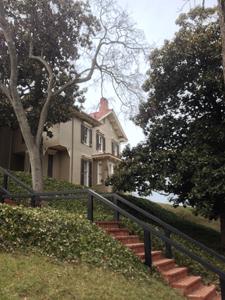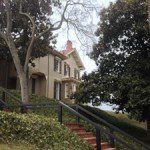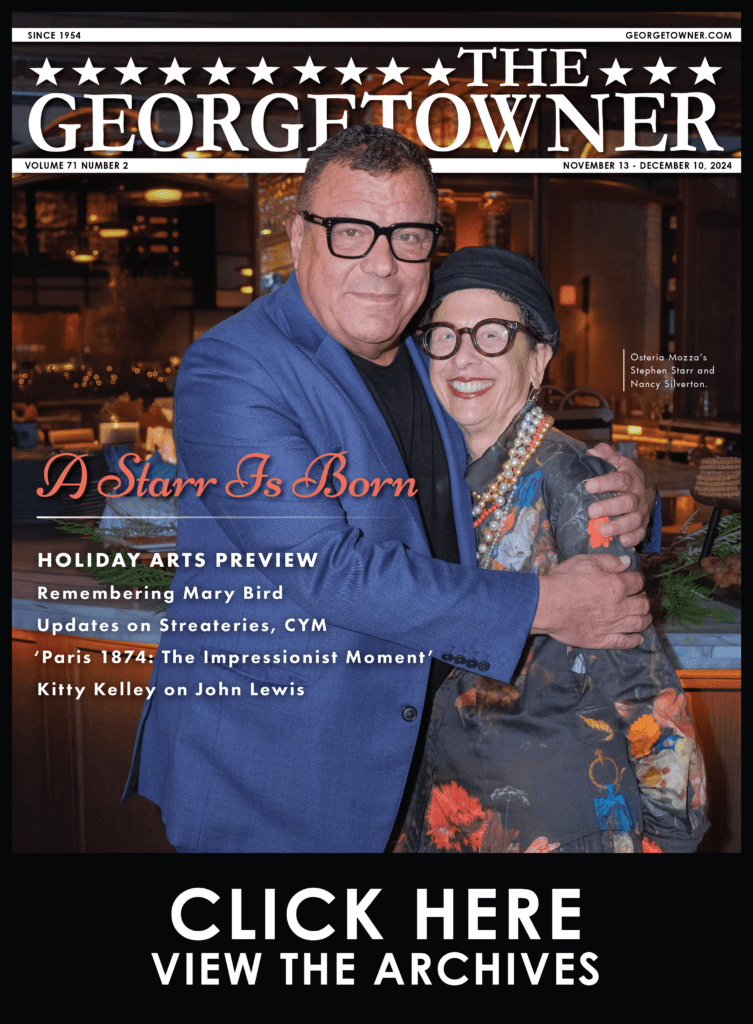Frederick Douglass’s Anacostia Estate
By • March 30, 2016 0 1854

Several great Americans were born into slavery. One way the nation pays tribute to such personages is on our currency. We are likely to see Harriet Tubman on the $10 or $20 bill in a few years. And in 2017, the former home in Anacostia of Tubman’s fellow abolitionist, Frederick Douglass, will appear on quarters.
Douglass, who lived in the hilltop house he named Cedar Hill from 1877 until his death in 1895, was known as the “Sage of Anacostia” and — both for his oratory and for his white mane — “the Lion of Cedar Hill.” Preserved by Douglass’s second wife, the property became Frederick Douglass National Historic Site in 1988.
Whether during Black History Month or when the nine-acre site is in bloom, a visit to Cedar Hill is one of D.C.’s most rewarding heritage experiences. The National Park Service offers ranger-guided tours of the restored house, furnished largely with original pieces, five times daily (reservations, made for a $1.50 fee at recreation.gov, are recommended).
The huge trees, terraced front lawn and woodsy backyard — where Douglass’s rustic stone hideaway, the “Growlery,” has been reconstructed — make it easy to imagine the rural Anacostia of the mid-1800s. The house’s builder and original owner was John Van Hook, one of the developers of an early, semi-successful suburb called Uniontown, aimed at Navy Yard workers (and from which Irish and African Americans were excluded).
Douglass purchased the house in 1877 upon his appointment by Rutherford B. Hayes as U.S. Marshall for the District of Columbia. He served until 1881 and later became Minister to Haiti, appointed by Benjamin Harrison.
Speaking at the dedication of the Haitian Pavilion at the 1893 Chicago World’s Fair, Douglas said of the Haitian people: “It will ever be a matter of wonder and astonishment to thoughtful men, that a people in abject slavery, subject to the lash, and kept in ignorance of letters, as these slaves were, should have known enough, or had left in them enough manhood, to combine, to organize, and to select for themselves trusted leaders and with loyal hearts follow them into the jaws of death to obtain liberty.”
Writing and speaking about human rights — of blacks and, during the latter part of his life, of women — was Douglass’s calling. Born in 1818 on a plantation in Talbot County, on Maryland’s Eastern Shore, he taught himself to read and write as an enslaved boy, a household servant in Baltimore.
At 20, while working as a ship caulker on the Baltimore docks, he escaped to New York City, married a free black woman, Anna Murray, and began to raise a family in New Bedford, Massachusetts. He soon became an agent of William Lloyd Garrison’s American Anti-Slavery Society and wrote the first of three autobiographies.
Still a fugitive from slavery, Douglass went on a speaking tour in Europe, returning to the U.S. after English friends purchased his freedom. In 1847, he launched an abolitionist newspaper, the North Star, in Rochester, New York. Twenty-five years later, at 54, a prominent public figure who had advised Abraham Lincoln during the Civil War, he and his family relocated to Washington, living at 316 A St. NE prior to buying the Anacostia estate.
A short film shown in the visitor center movingly tells his life-story, with graphic scenes of his treatment by a slave-breaker and winning cameos by actors playing Garrison, Tubman, Lincoln and John Brown. Several scenes were filmed in the house, including a confrontation between Douglass and his daughter over his decision to marry Helen Pitts, white and 20 years his junior.
There is an extensive selection of books by and about Douglass for all ages in the shop, notably the dual biography “Giants: The Parallel Lives of Frederick Douglass and Abraham Lincoln” by Harvard professor John Stauffer.
After a climb of 85 outdoor steps from the visitor center (there is also a ramp), the tour enters the house from the front porch. Visitors get to look in on rooms downstairs and up, including the kitchen wing that Douglass added, converting the former kitchen into a large dining room in which to host his many visitors. Before or after the tour, the hilly grounds are open to explore.
When in Anacostia, another black history stop is the Anacostia Community Museum, founded by the Smithsonian in 1967 as a storefront museum in the Carver Theater, a 1940s movie house. Twenty years later, it moved to a new building near Fort Stanton Park. On Saturday, Feb. 27, at 2 p.m., the museum will host Aaron Reeder’s show, “Rhythm Café: The Life & Times of Sammy Davis Jr.”
For more information on the Frederick Douglass National Historic Site, 1411 W St. SE, visit nps.gov/frdo or call 202-426-5961.
For more information on the Anacostia Community Museum, 1901 Fort Place SE, visit anacostia.si.edu or call 202-633-4820.
- The nine-acre Frederick Douglass Historic Site, with terraced lawn and huge trees, retains the feel of rural 19th-century Anacostia. | Photo by Richard Selden.
- Historic Home of Fredrick Douglas. | Photo by Richard Selden.



